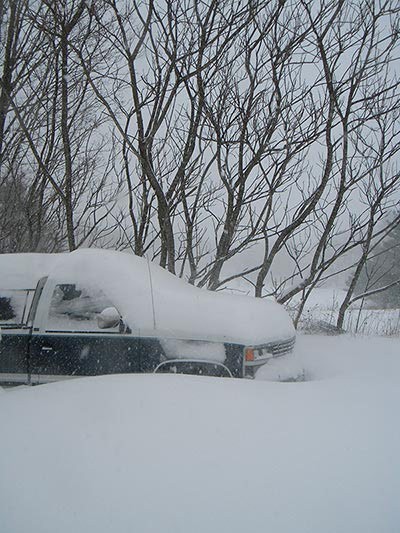We hear all the time about how winter’s disappearing in this era of climate change (The New York Times recently ran a piece called “The End of Snow?”), so I can’t help but imagine Mark Twain, winter-white hair and winter-white suit, suggesting that the reports of its death have been greatly exaggerated. It hasn’t been super bitter cold where I live – a 10 below, a 15.9 below, a 17 below. But except for one normal January thaw, it’s been consistently cold since November. Snow depths in the woods are knee-to-thigh deep; waist deep in the drifts. This is as old school as most old school ever was.
It’s funny how the body adjusts and adapts. By now my ears are keen enough to be able to tell how cold it is, within a degree or two, by the sound my truck makes when it starts in the morning. My blood is so thick that woods work with bare hands and a metal tubing tool is nothing when it’s 20 degrees out. A few months back I would have been looking for gloves at 40.
For the last month or so we’ve been scrambling with sugaring prep; tromping up the hill into the Hall bush in the late afternoon to hurriedly work until dark on some expansion we’re trying to get built before the sap runs. But then a funny thing happened when we got dumped on by that last Nor’easter: life slowed down. It literally slowed in that it now takes five times as much effort and time to take a step, but it also figuratively slowed down. That hurried edge got sanded off. I got trapped in the driveway during that last big snowstorm and couldn’t leave the house; as a result I got to spend an evening reading a book; something I haven’t done in ages. I had a nice conversation over coffee with a logger who’s cutting wood a few woodlots over, something we never would have had a chance to do if we were both jamming to get things done.
Botanists talk about how certain plants need a period of dormancy, of prolonged snow and cold in winter, to thrive. Same can probably be said for people. Northeastern people, anyway.



Discussion *